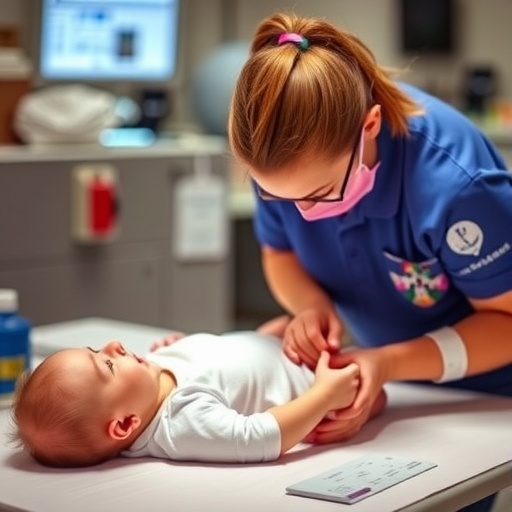The American Academy of Pediatrics and the American Heart Association have collaboratively unveiled significant updates to their pediatric and neonatal resuscitation guidelines, marking a milestone in lifesaving emergency care for the youngest patients. These 2025 guidelines represent the most comprehensive revision since 2020, integrating cutting-edge evidence and practical refinements aimed at enhancing survival outcomes in infants and children experiencing cardiac arrest.
Cardiopulmonary resuscitation (CPR) and emergency cardiovascular care (ECC) in pediatric populations demand specialized protocols distinct from those used for adults. Recognizing this, an expert joint committee with balanced representation from both organizations meticulously revised chapters covering Pediatric Advanced Life Support, Pediatric Basic Life Support, and Neonatal Resuscitation. Published simultaneously in Circulation and Pediatrics, this synchronized approach reflects a commitment to uniform, evidence-driven care across care settings.
Cardiac arrest in pediatric patients remains a critical public health challenge, with over 7,000 out-of-hospital and 20,000 in-hospital incidents annually in the United States alone. This stark reality underlines the urgent necessity of tailored resuscitation strategies that account for the physiological and developmental nuances inherent to infants and children, rather than treating them as smaller adults.
The updated guidelines introduce a universal “chain of survival” applicable to both adults and pediatric patients, streamlining emergency response protocols across age groups. This chain emphasizes the importance of prevention and preparedness even before cardiac arrest occurs, acknowledging that proactive measures can either prevent arrest or optimize subsequent resuscitation efforts. Early recognition of cardiac arrest, prompt activation of emergency medical services, and immediate initiation of high-quality CPR starting with chest compressions are focal points underscored in the new recommendations.
Addressing the management of severe foreign body airway obstruction (FBAO) in infants and children, the guidelines clarify and refine intervention techniques. For infants experiencing choking, healthcare providers and lay responders are now advised to perform repeated cycles consisting of five back blows alternating with five chest thrusts, explicitly excluding abdominal thrusts due to potential harm. In contrast, for pediatric patients beyond infancy, the protocol involves repeated cycles of five back blows alternating with five abdominal thrusts, a nuanced modification from prior guidance that solely recommended abdominal thrusts.
The recommended chest compression techniques for infants have been thoughtfully revised based on practical effectiveness. The two-finger method along the sternum has been removed due to insufficient compression depth and efficacy. Instead, responders are counseled to utilize either the one-hand technique or the two thumbs–encircling hands technique. If physical constraints prevent chest encirclement, compressions should be delivered using the heel of one hand to ensure adequate depth and force, optimizing blood flow during resuscitation.
Neonatal resuscitation protocols also received substantial updates, emphasizing the critical role of properly trained healthcare professionals dedicated to facilitating newborns’ transition from the intrauterine fluid environment to breathing air. Approximately 5-10% of newborns annually require assistance during this crucial period, making specialized expertise indispensable to avoid complications and reduce mortality.
A distinct neonatal chain of care complements the unified pediatric and adult chain, encompassing prenatal care through to postnatal recovery and follow-up. This framework stresses that resuscitation success is fundamentally rooted in anticipation, preparation, and teamwork among neonatal care teams. The increased duration of delayed cord clamping to 60 seconds or more, along with the encouragement of sustained skin-to-skin contact immediately after birth, reflects mounting evidence supporting these practices for improved newborn outcomes.
Concerning ventilation rates, the guidelines expand the recommended range to 30–60 inflations per minute for newborns requiring respiratory support, acknowledging the variability and necessity of adapting to physiological demands during resuscitation. Similarly, technical nuances such as chest compression positioning, timing for pulse oximetry placement, and ventilation corrective procedures have been reevaluated and strengthened, reflecting the latest scientific scrutiny and clinical experience.
This landmark publication emerged amid global coordination, with leaders of the guideline writing groups participating in the International Liaison Committee on Resuscitation conference in Rotterdam. To facilitate broad dissemination and immediate adoption, the American Heart Association and American Academy of Pediatrics have launched comprehensive training materials accessible in English and other languages, ensuring responders worldwide are equipped with the most current lifesaving protocols.
These updates underscore a persistent dedication to refining emergency pediatric and neonatal resuscitation, informed by rigorous scientific inquiry and frontline clinical insights. Through these efforts, the organizations aim to substantially improve the survival rates and neurological outcomes of children afflicted by cardiac arrest or requiring urgent respiratory intervention, marking a transformative leap in pediatric emergency care.
The American Heart Association and the American Academy of Pediatrics continue to foster innovation and education in the field of resuscitation science. These guidelines are not only a synthesis of current knowledge but also a springboard for future advancements, ensuring that every child’s chance at life is maximized through precise, evidence-based intervention.
Subject of Research: Updated Guidelines for Pediatric and Neonatal Cardiopulmonary Resuscitation and Emergency Cardiovascular Care
Article Title: 2025 American Heart Association and American Academy of Pediatrics Guidelines for Pediatric and Neonatal Resuscitation
News Publication Date: October 23, 2025
Web References:
- https://cpr.heart.org/pals
- https://aap.org/nrp
- https://www.ahajournals.org/toc/circ/152/16_suppl_2
- https://doi.org/10.1542/peds.2025-074352
- https://doi.org/10.1542/peds.2025-074350
- https://doi.org/10.1542/peds.2025-074351
Keywords: Pediatric Resuscitation, Neonatal Resuscitation, Cardiopulmonary Resuscitation, Emergency Cardiovascular Care, Pediatric Advanced Life Support, Pediatric Basic Life Support, Neonatal Chain of Care, Foreign Body Airway Obstruction, CPR Guidelines, Infant and Child Cardiac Arrest




